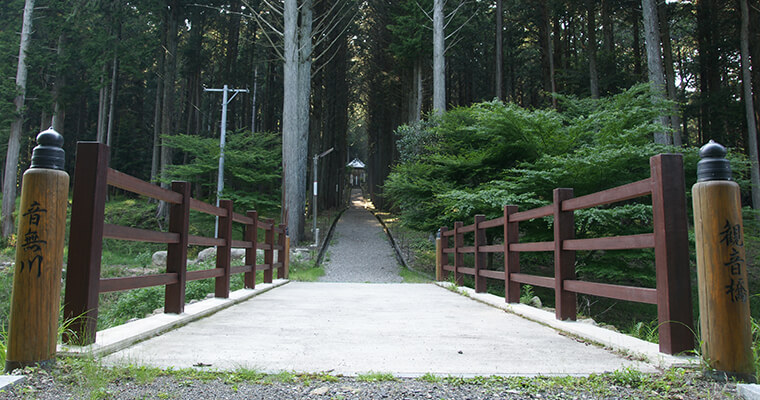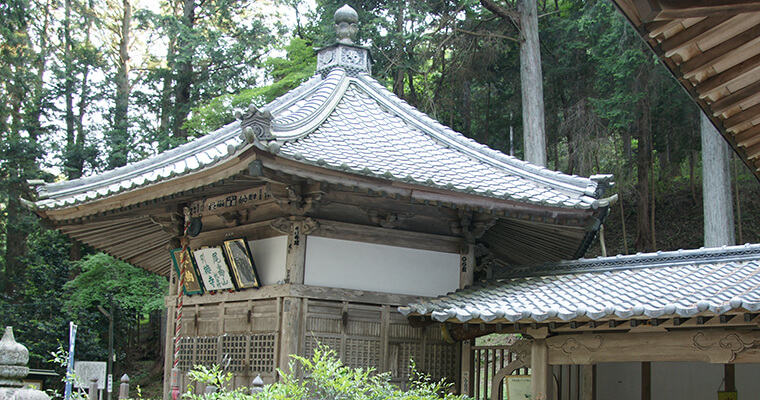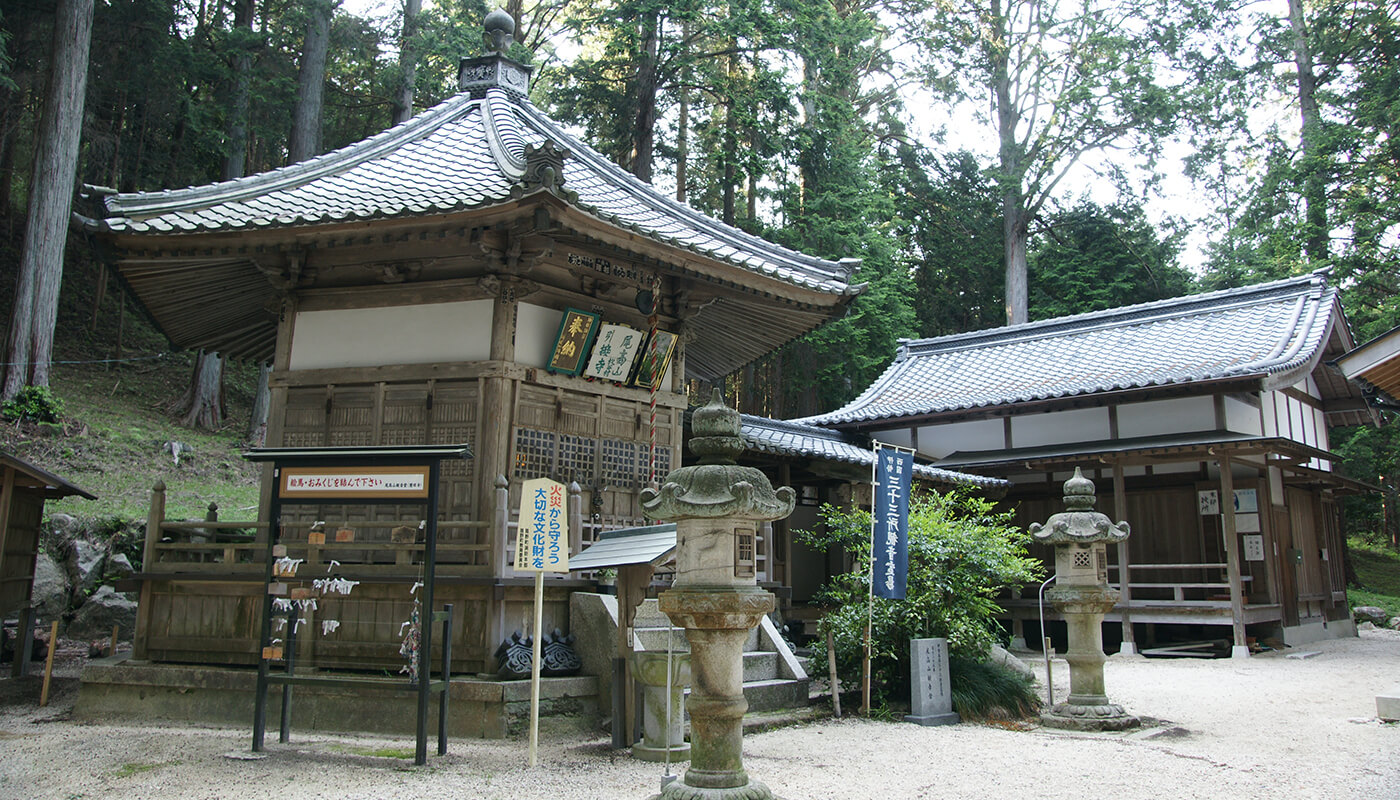Former Number 25Odakasan Kannon-dō temple
History of the temple
Seiyōzakki
Odakasan Injō-ji is settled in a Sugitani valley. The main statue is a Senju Kannon. It is a temple number 25 of Ise Pilgrimage.
The fresh smell of the morning sun at the mountain ridge, where clouds disappear and the sky clears up.
Odaka Kannon is enshrined in a hexagonal hall, which stands on the Odaka plateau. A mountain path, along which grow 300 year old hinoki cypress trees, leads from the bottom to the front of the hall. Inside the hall a wooden 1.7m (5ft6.9in) high statue of Jūichimen Senju Kannon (Eleven-Faced Thousand-Armed Kannon) is worshiped. According to the legend it was made by a famous politician and promoter of Buddhism – Prince Shōtoku (574-622). Among many devoted believers it is commonly known as Kannon of Odaka.
A long time ago a woman from Sugitani valley climbed the mountain and found medicinal herbs. After applying them, she lived a long and healthy life. At some point in her life she devoted herself to Buddhism and started to worship Buddha Shakyamuni at the top of Mount Kunimi. This was the beginning of Odakasan Kannon-dō temple. Many years later the founder of Shugendō, the Path of Ascetic Training, named En no Ozunu (also known as En no Gyōja, 643-701) was visiting the area during his preaching travel. When he learned that Mount Kunimi is a sacred ground, he decided to repair the aged temple and changed its name to Shaka ga take (Mount of Shakyamuni). In the end of 7th Century a statue of Jūichimen Senju Kannon was brought from Daikan-ji temple (currently Daian-ji) which stood near Fujiwara-kyō, the capital at the time. The statue was chosen among many other statues based on a Buddha’s providence. This is how Jūichimen Senju Kannon became the main statue of Odakasan Kannon-dō.
A century later the stories of this Kannon’s miraculous power reached Emperor Kanmu (735-806). He decided to build a new hall and a bell tower, he also decided to give a new name to the temple. The name he granted was Odakasan Injō-ji. In the end of the 8th Century a monk named Chōkō moved to the newly build temple and became a protector of the famous statue. He was a disciple of Saichō (767-822) – the founder of Tendai school of Buddhism, and was supported by a powerful clan of Sasaki from the Ōmi province. During the reign of Emperor Ninmyō (833-850) a famous scholar and poet Ono no Takamura (802-853) visited the temple and wrote a poem (which survived to this day). It was also visited by Minamoto no Yoshiie (1039-1106), a samurai famous for his skills and bravery, which came to pray for a victory in his battle against the enemies of the Emperor. According to the legend during his visit he donated 1000 koku (150t) of rice.
In 1163 a magnificent seven-structured temple compound consisting of the Main Hall , Shaka Hall (Hall of Shakyamuni), Sutra Hall, Fūdō Hall (Hall of Fudō Myō-ō – the Immovable Wisdom King), Daishi Hall (Hall of Kūkai), Lecture Hall, Founder Hall and the Main Gate was built thanks to a long time support of Fujiwara Yōkei, a member of a powerful Fujiwara clan. In the 2nd half of the 16th Century, the whole complex burned down after it was set on fire by the troops of Oda Nobunaga (1534-1582). Fortunately the main statue was saved. It was later enshrined in a small hall which was built by Fujiwara clan at the site of the temple.
The current hexagonal hall was built in 1815 by Masuda Heizō from the Sugitani valley. It enshrines the main statue of Jūichimen Senju Kannon and a statue of En no Ozunu.

Outline
-
Honorific name
Odakasan
-
Temple's name
Kannon-dō
-
Sect
Jōdo
-
Religious service
Jūichimen Senju Kannon
(Eleven-Faced Thousand-Armed Kannon)





